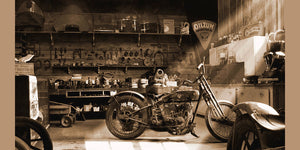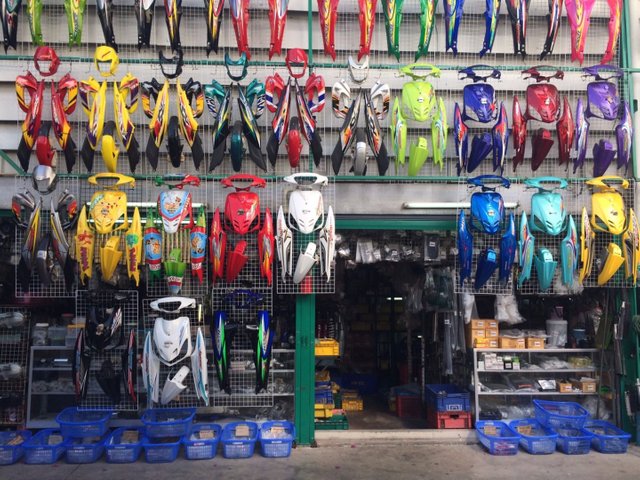Discover Quality Moto Parts NZ for All Your Motorcycle Requirements
Understanding the Crucial Parts of a Motorcycle: A Comprehensive Guide for Enthusiasts
For motorbike lovers looking to boost their riding experience and ensure their bikes run smoothly, comprehending the vital parts of a bike is paramount. Each element, from the engine's elaborate functions to the critical duty of the stopping mechanisms, not only affects performance yet likewise safety and security and convenience.
Engine Elements

The camshaft plays a crucial function in regulating the timing of the engine's valves, ensuring the exact opening and closing required for reliable fuel and air consumption, as well as exhaust expulsion. This timing is essential to preserving optimum engine performance and effectiveness. Additionally, the carburetor or gas shot system, depending upon the bike version, is accountable for mixing air with gas in the right ratio for burning.
The cooling system, either air or liquid-based, works to keep the engine's temperature level within operational limitations, avoiding overheating and making certain long life - motocross parts nz. Each part, meticulously created and integrated, adds to the smooth procedure of the engine, specifying the motorbike's power outcome and overall performance
Transmission System
Essential to the motorbike's functionality, the transmission system guarantees efficient power transfer from the engine to the wheels. This system consists of a number of essential elements, including the clutch, transmission, and last drive, each playing an essential function in translating the engine's power right into motion. The clutch, normally run by a hand lever, serves to engage and disengage the engine from the transmission, enabling smooth gear changes and regulated velocity.
The transmission, commonly described as the transmission correct, consists of a collection of gears that bikers can by hand shift via to change the bike's rate and torque outcome. These equipments are prepared in a sequence that allows the bike to speed up smoothly and preserve optimum engine efficiency across various rates. Most motorcycles use a sequential transmission, needing the motorcyclist to change equipments in a predetermined order.
Braking Devices
While comprehending the transmission system is vital to utilizing a motorcycle's power, just as crucial is the ability to control and quit that power properly, which is where stopping devices come right into play. Brakes are critical for safety and efficiency, giving the cyclist with the necessary control to navigate numerous terrains and conditions. Generally, motorcycles include 2 sorts of stopping systems: disc brakes and drum brakes.
Disc brakes are a lot more prevalent in contemporary motorbikes due to their superior efficiency. This system offers better heat dissipation, regular efficiency, and enhanced stopping power, particularly in damp problems.
Alternatively, drum brakes, though much less common, are still found in some motorbikes. They work by pushing brake shoes against the internal surface area of a drum affixed to the wheel. While typically much less efficient in warmth dissipation and quiting power, drum brakes are simpler and more motorcycle visor cost-efficient.
Comprehending these braking systems' nuances enables cyclists to keep their bikes properly and appreciate the engineering that ensures safe and reliable quiting.
Suspension and Steering
Suspension and guiding systems are important elements that considerably affect a bike's handling and trip convenience. The suspension system, consisting of forks at the front and shock absorbers at the back, takes in road irregularities, enhancing security and control. Front forks, normally telescopic or inverted, compress and rebound to minimize impacts, while rear shock absorbers maintain tire call with the roadway, essential for grip and safety and security.
Steering, focused around the handlebars, links the rider to the motorbike's directional control. The steering head bearings ensure smooth procedure, allowing precise ability to move. Appropriate placement and upkeep of these bearings are essential for foreseeable steering response and decreasing cyclist tiredness.
The suspension's adjustability is one more essential facet; preload, damping, and rebound settings enable personalization to fit numerous riding conditions and styles. This flexibility is important for maximizing performance, whether navigating city streets or dealing with sturdy trails. Technologies like digital shock absorber provide real-time adjustments, enhancing adventure high quality throughout varied surfaces.

Electrical Systems
After making certain a controlled and smooth adventure via reliable suspension and steering systems, attention turns to the electric systems, a critical aspect of modern motorcycles. These systems play a critical function not just in starting the engine browse this site however also in powering numerous elements that improve the capability and security of the bike.
At the heart of a bike's electric system is the battery, which stores electrical energy essential for starting the engine and powering supporting systems - motocross gear. The generator or generator, coupled with the rectifier-regulator, makes sure the battery stays charged while the motorbike is in procedure, transforming mechanical power right into electric power and maintaining voltage degrees
The ignition system, an additional crucial part, is in charge of igniting the air-fuel blend in the engine's cylinders. Modern motorbikes commonly utilize an electronic ignition system, providing greater efficiency and integrity compared to standard systems.
Lighting systems, consisting of headlights, tail lights, and indications, are additionally crucial, making certain presence and security for the rider. Added digital components such as sensors, control units, and presents contribute to sophisticated functions like gas shot administration, anti-lock braking systems (ABDOMINAL), and digital dashboards, additionally enhancing the riding experience.
Conclusion
An extensive comprehension of a motorcycle's necessary components, consisting of the engine, transmission system, braking mechanisms, suspension, guiding, and electrical systems, is crucial for enthusiasts intending to maximize safety and security, convenience, and efficiency. Mastery of these components permits informed decisions concerning upkeep and upgrades, inevitably improving the riding experience. By incorporating this knowledge, cyclists can guarantee their motorbikes operate at peak performance and dependability, thus maximizing both pleasure and durability of their vehicles.
For motorbike lovers looking to elevate their riding experience and ensure their bikes run smoothly, recognizing the vital components of a motorbike is extremely important.Essential to the motorbike's you can look here capability, the transmission system makes certain effective power transfer from the engine to the wheels.While understanding the transmission system is key to using a bike's power, equally important is the capacity to manage and stop that power properly, which is where braking mechanisms come into play. Typically, motorcycles include 2 types of stopping systems: disc brakes and drum brakes.
A thorough comprehension of a motorbike's vital elements, consisting of the engine, transmission system, braking devices, suspension, steering, and electrical systems, is vital for enthusiasts intending to maximize comfort, efficiency, and security.